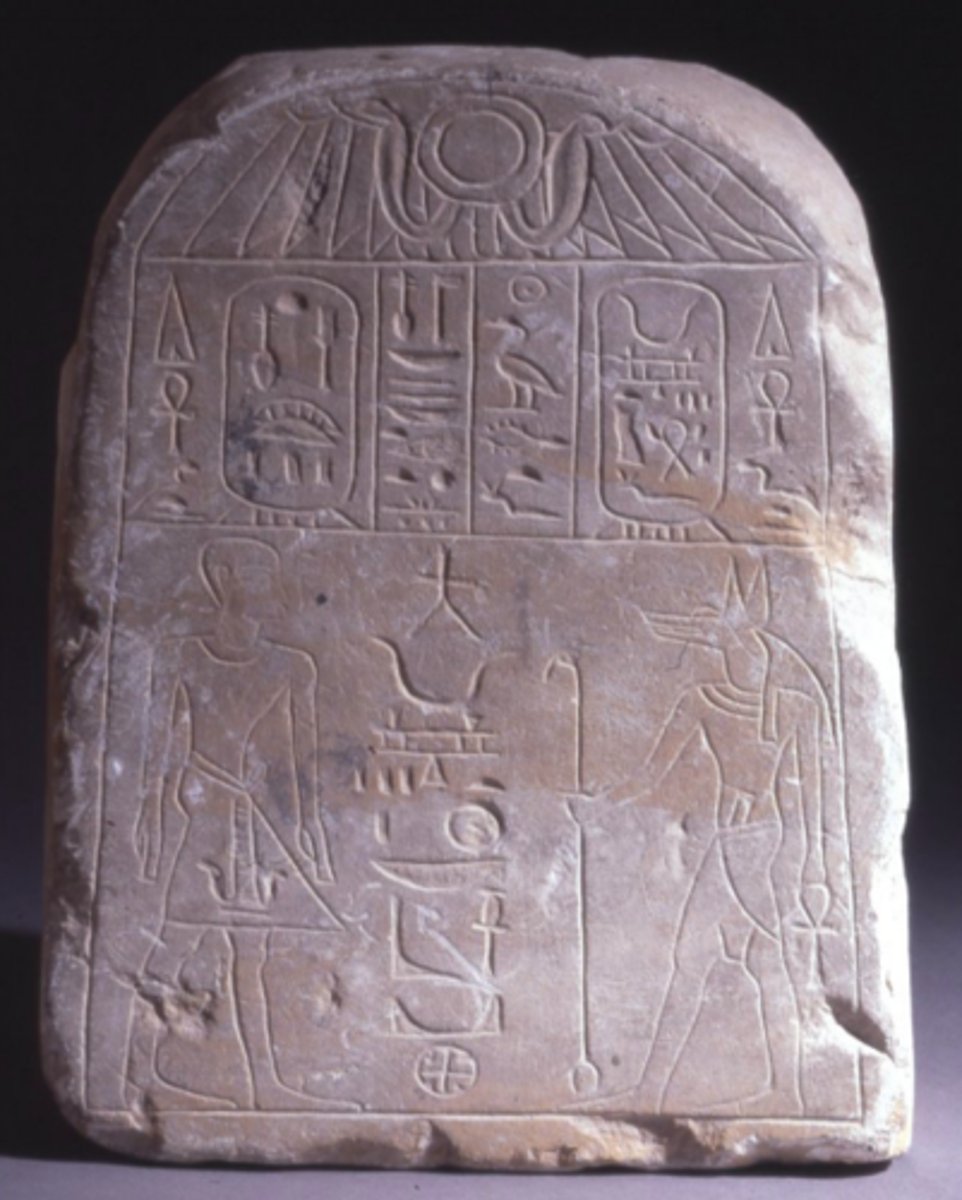Egyptian Art and Archeology Midterm Slidea
1/14
There's no tags or description
Looks like no tags are added yet.
Name | Mastery | Learn | Test | Matching | Spaced |
|---|
No study sessions yet.
15 Terms
Title: Naqada II Jar
Date: Predynastic period
Material: Clay pottery (sandstone), L-ware
Provence: Adaima, Egypt. Currently in the MET
Function/meaning:
shows humans vs. animals/humans on a boat on one side and animals in lines on the other(gazelles, flamingoes), uses stick figures and lines and the zig-zags on the top represents water
A jar of this shape and size would have been used for storage, like for liquids (water, wine, oil, et cetera).
Significance: shows the interaction between man and animal on the nile
We know that this jar comes from a tomb, so we might also guess that the decoration served some religious purpose.
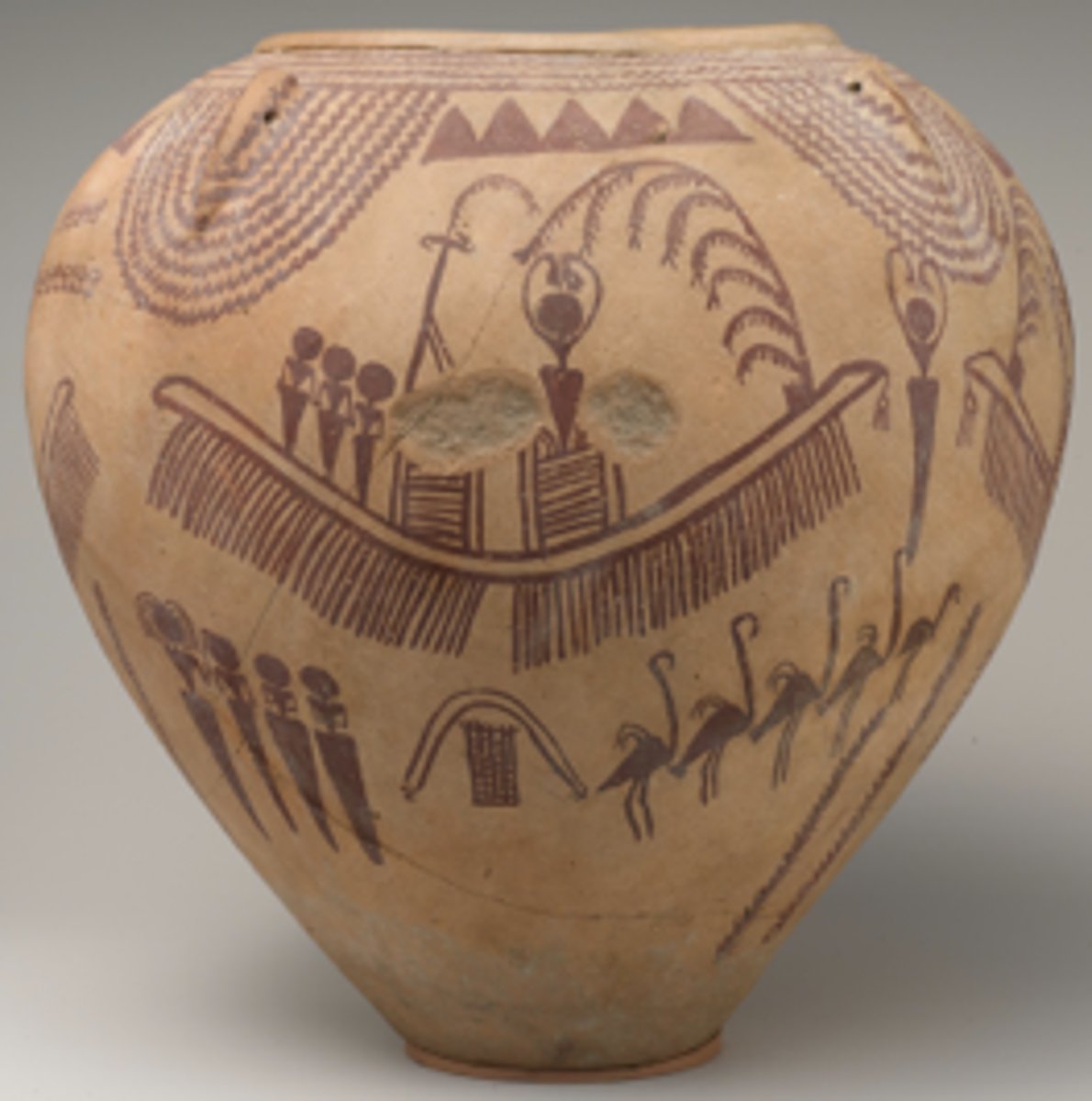
Title: Tomb 100 Mural from Hierakonpolis
Belonging to: A powerful member of the Hierakonpolis elite
Date: Late Predynastic Period
Material: The grave was a rectangular brick-lined and plastered tomb with painted walls and a brick partition
Provence: Aswan Governorate, Egypt. Displayed at the egyptian museum in Cairo
Function/meaning: Its function was a tomb, place for afterlife. Imagery of smiting enemies, register lines not used, human figures not developed
Significance: shows evidence of social order, the imagery of smiting enemies and herding animals becomes a common depiction of power
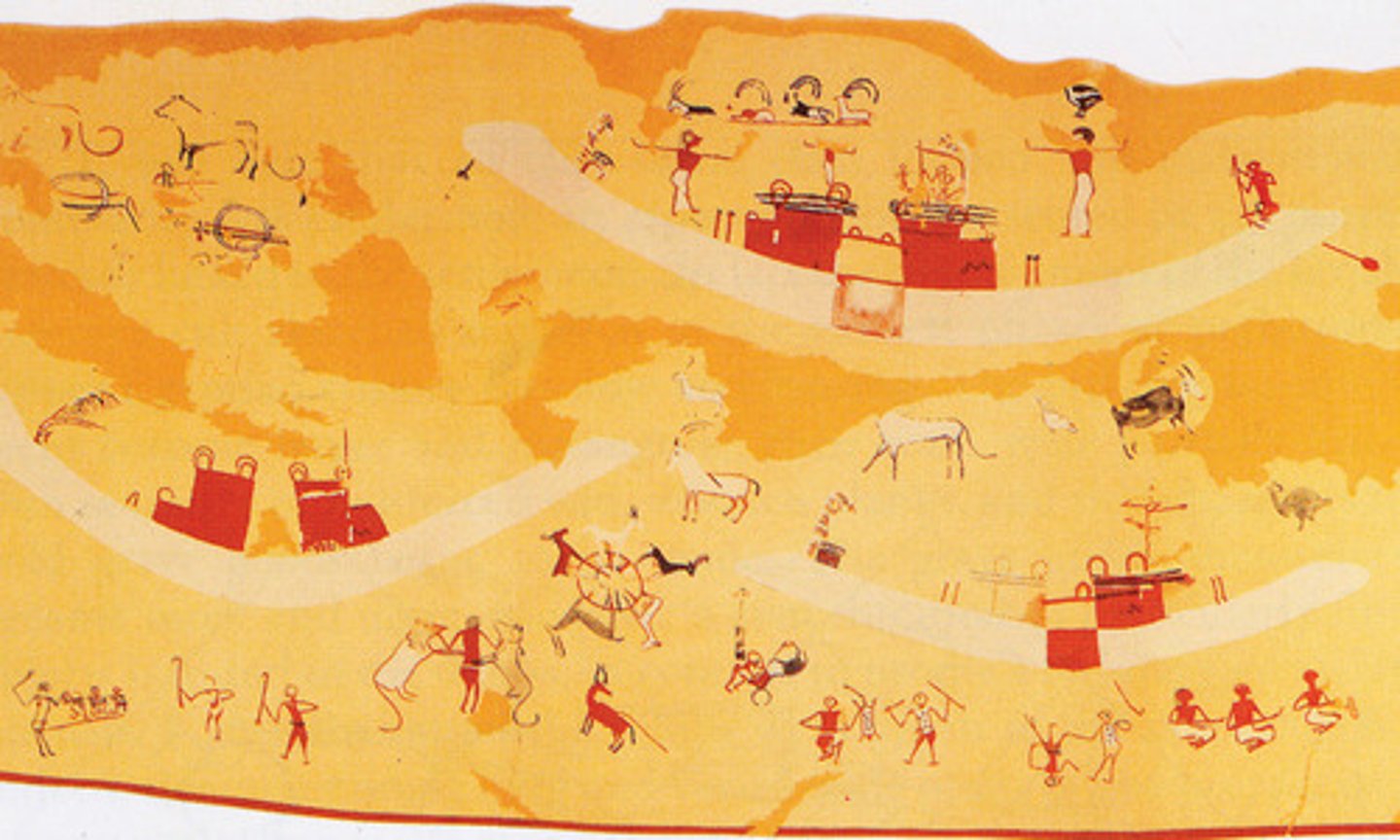
Title: Narmer Palette
Date: Predynastic Period
Material: Siltstone
Provence: Hierakonpolis, is now part of the permanent collection of the Egyptian Museum in Cairo
Function/meaning: It depicts the king celebrating victory over the north
The palate is divided by baselines
Human figures fully developed (recognizable perspectives of each feature)
Scale is used to show importance of King, naked figures represent low status
Horus falcon signifies king is a living impersonation of the god
Significance: The palette was able to confirm that Narmer was the true founder of united Egypt. It also shows the level of unrest and chaos that spread all over the divided regions of Egypt before Narmer's unification.
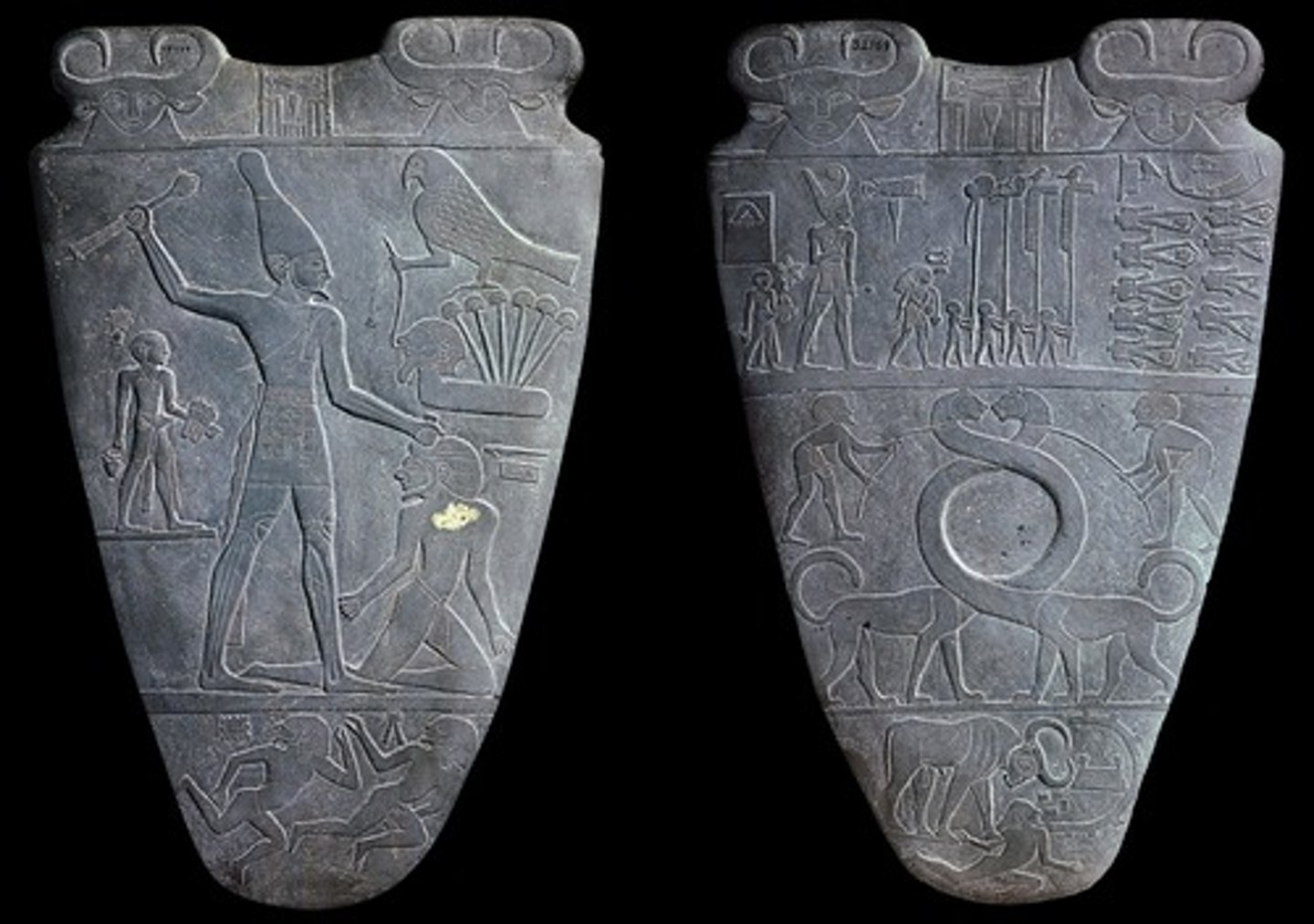
Title: The Cities Palette (Lybian or Towns Palette)
Date: Protodynastic Period
Material: Schist
Provence: it was found in Abydos, now in Egyptian Museum in Cairo
Function/meaning: It contains some of the earliest hieroglyphic inscriptions ever found. Used for ceremonial tablets, The fact that the palette is carved on both sides means that it was created for ceremonial instead of practical purposes.
Significance: Thought by some to depict the unification of Upper and Lower Egypt under the king Narmer.
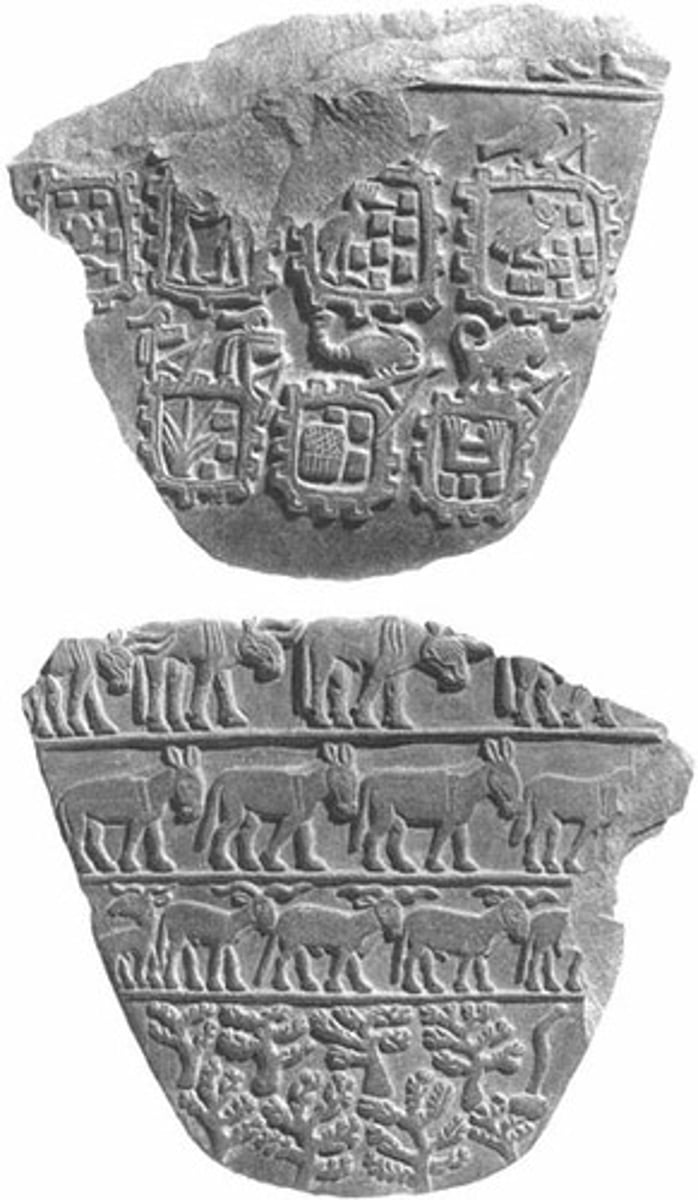
Title: The Scorpion Macehead, owner: King Scorpion
Date: Early Dynastic Period, 0 dyansty
Material: Limestone
Provence: Hierakonpolis- now in Ashmolean Museum, Oxford
Function/meaning: raised relief, similar properties to the Narmer Palate
scale represents importance, hieroglyphs of king's name he is doing agriculture/water ritual, servants/lower class around
Significance: King Scorpion performing the ceremonial opening of an irrigation canal.
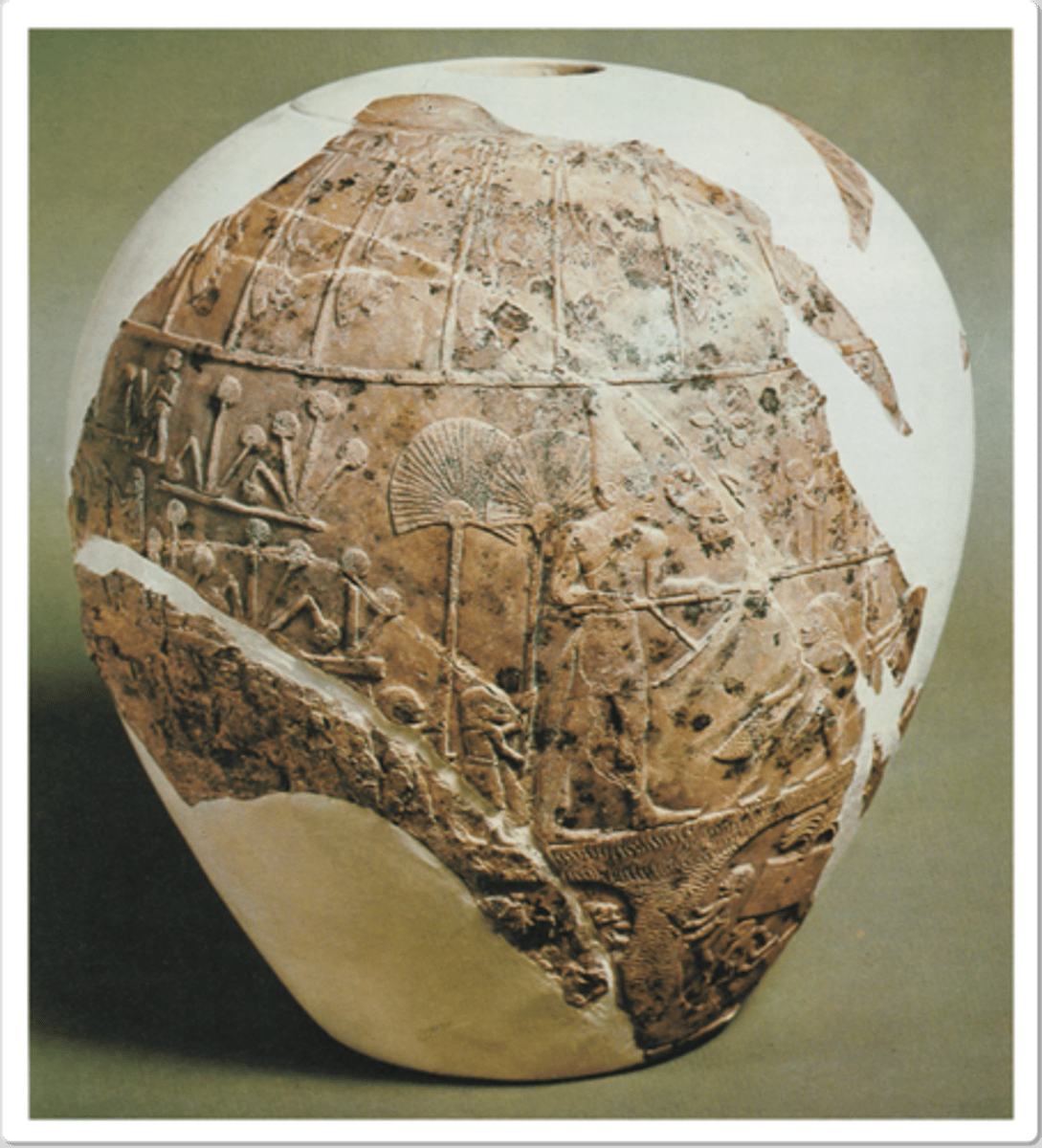
Title: Bone and Ivory Tags from Tomb U-j
Date: Predynastic Period
Material: pottery vessels, and clay seal impressions
Provence: found in tomb U-J of Um, el' Qa'ab at the site of Abydos
Function/meaning: their purpose was to documented the quantity and geographic origin of particular commodities that were to be exchanged
Significance: earliest examples of Egyptian writing
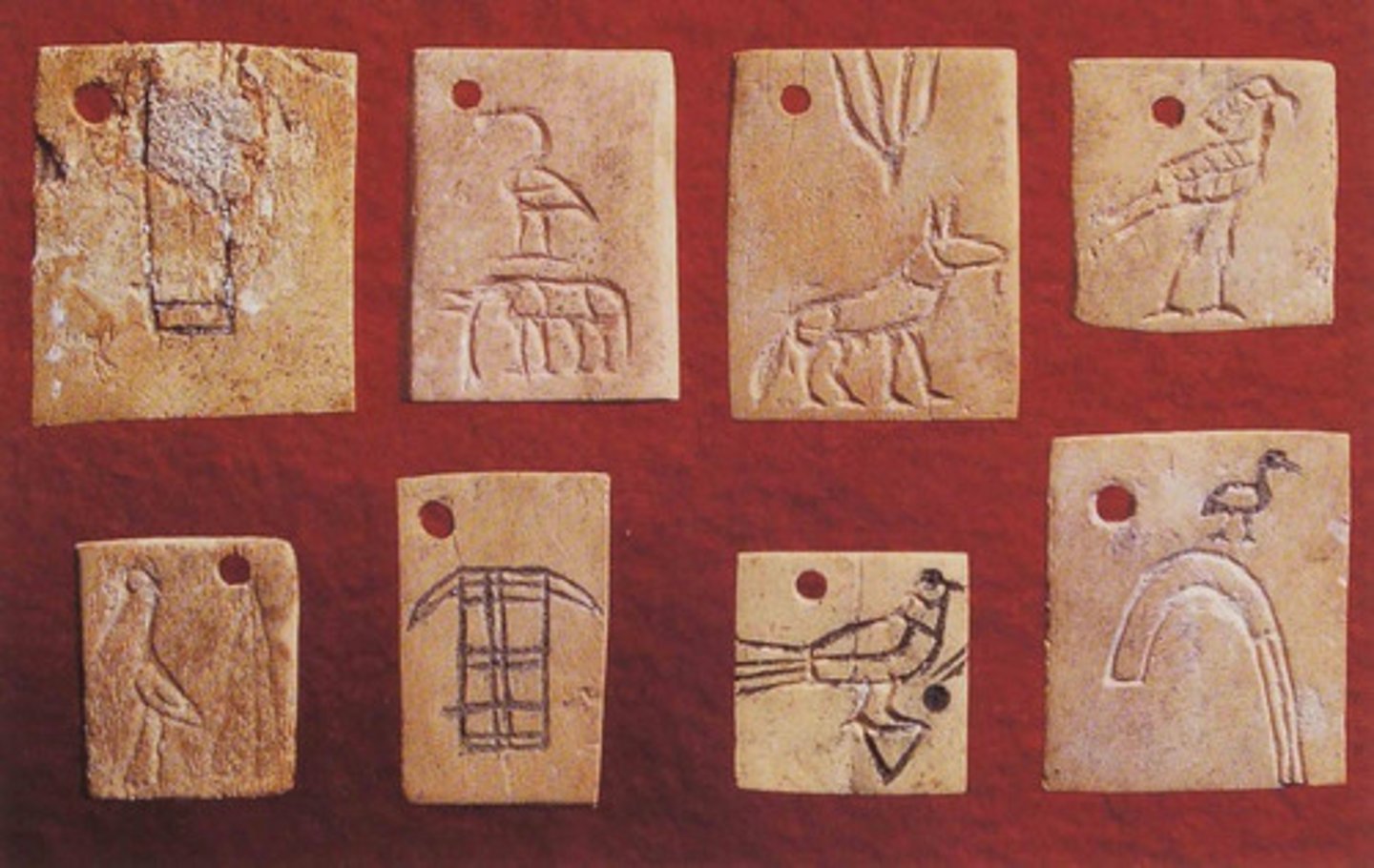
Title: Statue of King Djoser
Date: 3rd dynasty
Material: made of limestone
Provence: currently at the egyptian museum in cairo
Function/meaning: The statue depicts the king with his left hand resting on his thigh and his right hand over his heart which is thought to be the center of wisdom.Thus, his statue reflects his ability to fearlessly and strongly lead Egypt by following the wisdom found in his heart.
The strong and bold proportions of the statue seen in his ears, nose, and feet are to underscore his importance and impact on Egypt.
Significance: His statue serves as a tangible connection to the era of prosperity and societal well-being that Djoser was responsible for. Crafted from limestone, the statue's choice of material reflects Djoser's strength and eternal presence.
Allow the king to manifest himself and be able to see the rituals performed in and out the serdab.
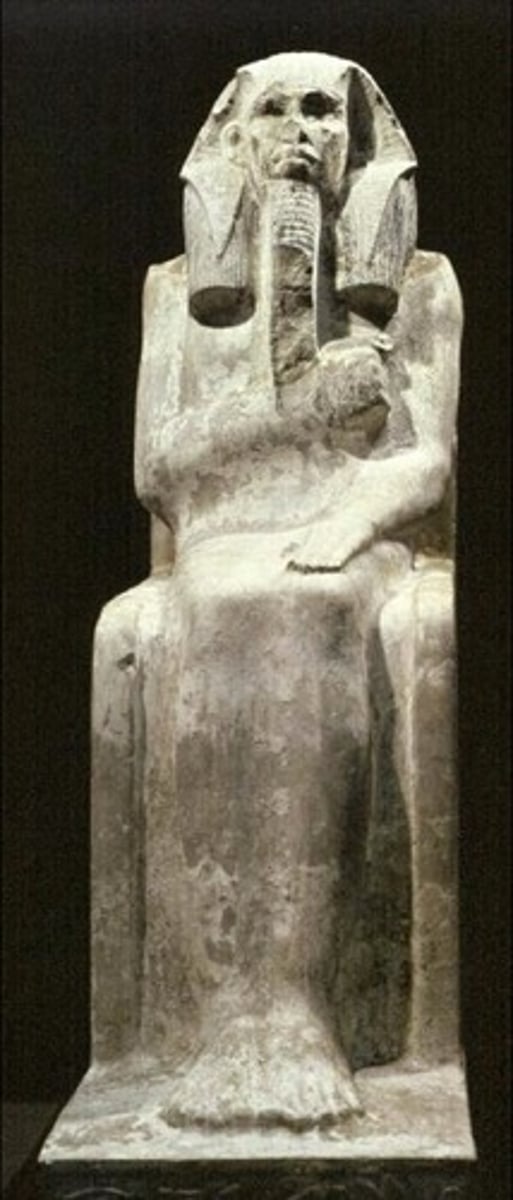
Title: Cedar Boat from Giza, Owned by Pharaoh Khufu
Date: 4th dynasty
Material: made of lebanon cedar
Provence: found in the Great Pyramid of Pharaoh Khufu alongside other grave goods and offerings meant for the afterlife- now in Grand Egyptian Museum
Function/meaning: oldest boat intact, "masterpiece of wood"
Significance: known as a "solar barge", a ritual vessel believed by ancient Egyptians to carry the resurrected king across the heavens with the sun god Ra. Transporting Khufu's body on the Nile to the Giza necropolis or on a final pilgrimage to holy sites.
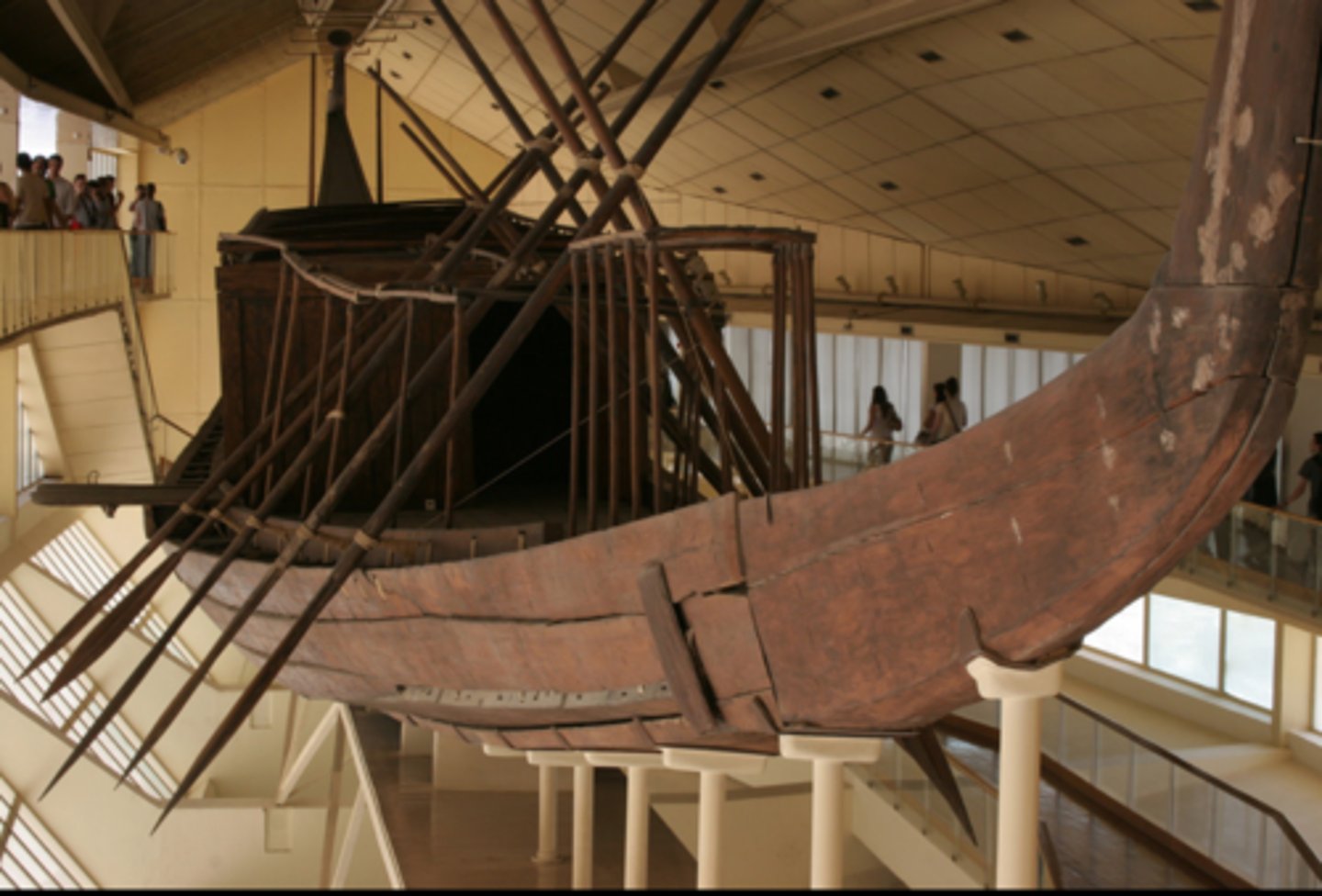
Title: Statue of Khafre
Date: Old Kingdom, 4th Dynasty, Reign of Khafre
Material: Gneiss- an extremely hard stone that symbolizes the strength and permanence of kingship
Provence: Giza Pyramid Complex of Khafre - currently: Egyptian Museum, Cairo
Function/meaning: semi-tawny symbol on the side of his throne representing unity in Egypt in Khafre - represents the king's duty to bind the different parts of Egypt under one rule
Significance: Used in funeral rituals, This Old Kingdom statue has an important function in Egyptian tombs as substitute abodes for the Pharaoh's ka—the life force that accompanied a person with a kind of other self.

Title: Bust of Prince Ankh-haf, owner: Prince Ankhhaf
Date: Old Kingdom, 4th dynasty
Material: painted limestone
Provence: Ankhhaf's Tomb in Giza, now at Museum of Fine Arts Boston
Function/meaning:
overseer during the reign of Pharaoh Khufu-son of Sneferu- held the title of vizier, "the great one of Five of the house of Thoth"- had great interest in the building of the Great Pyramid of Giza and most likely had a role in the construction of the Sphinx
Significance:
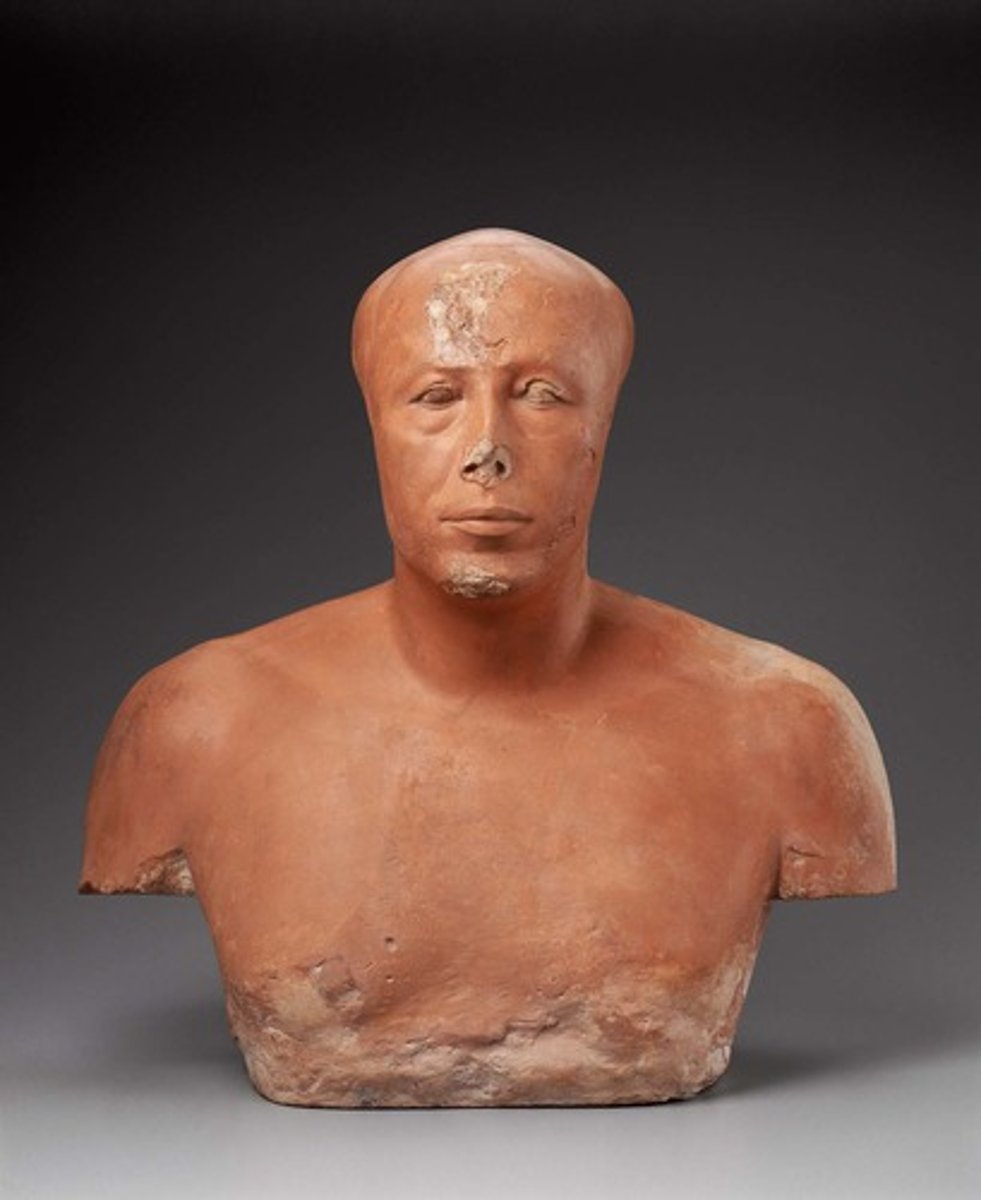
Title: Tomb of Mereriqer at Relief
Date: First intermediate period
Material:
Provence:
Function/meaning:
depicts people bringing offerings to the king- the style and proportions of figures resemble the stelae from Naga ed-Deir- the figures have huge eyes and slender unmuscled figures
Significance:

Title: Stela of Inhurnakht and His Wife Hu
Date: First intermediate period
Material: limestone painted
Provence: Excavated at Naga ed-Deir, currently in the British Museum in London
Function/meaning:
figures facing offerings- man holding staff with his left foot forward; woman holding arm of man signifying she supports him, feet closer together, and half the size of the man- standing for the offering table - differs from previous early dynastic depictions of offerings being received- smaller people feeding the man food/ offerings- the top half is registers of hieroglyphs- at the time when people preferred to be buried in their provinces - meaning the artists were less skilled (better artists were in Hierakonpolis)
Significance:
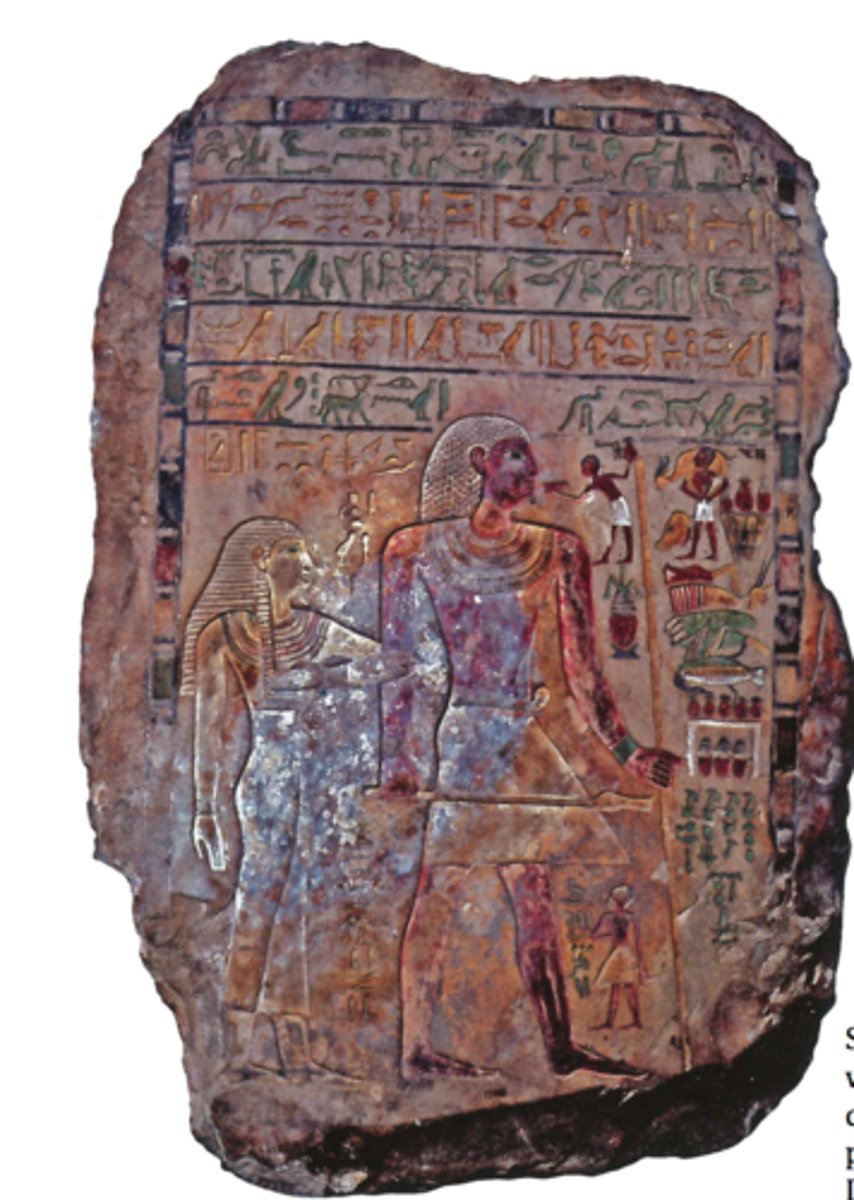
Title:Fertility Figurine
Date:
Material:the color is probably from lupis lazuli or turquoise
Provence:
Function/meaning:
Significance: figures that protected the dead; being reborn in the afterlife
the blue color of the figurine ties to the Nile/water- water = rebirth, cleansing, the source of life in general and the Nile especially in Egypt
Fertility Figurine
Title: Pectoral of Mereret, a necklace of Princess Mereret
Date:Middle Kingdom, 12th dynasty
Material:made of lapis lazuli, carnelian, amethyst, turquoise and gold
Provence: found in the Tomb of Mereret, now in Egyptian Museum in Cairo
Function/meaning: vulture goddess, Nekhbet depicted spreading her wings over the king, protecting him- two falcon-headed sphinxes stepping on the king's enemies/smiting-bears a cartouche containing the coronation name of Amenemhat III
Significance: king putting his branding on people; the balanced nature of the composition into which the chaotic poses of the foreigners are subsumed signifies the ordered world triumphant over the forces of chaos

Title: Stela of Wepwawetemsaf
Date: End of the 14th dynasty
Material: Limestone
Provence: Found in Abydos, now in British museum, London
Function/meaning: Simple, line outlining, contains no shadow as a result
Shows that by the end of the dynasty, the control of the resources the king has has weakened
Significance: Symbolic as the political power of kingship in egypt-in Abydos - shows the real decline and overall comparison and differences between different time periods/ pyramids vs. this stela
